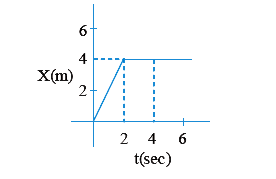Recommended Questions
- In the figure, the position time graph of a particle of mass 0.1 kg is...
02:48
|
Playing Now - In the figure given below, the position time graph of a particle of ma...
02:41
|
Play - The position-time graph of a particle of mass 0.1 kg is shown. The imp...
01:14
|
Play - In the figure, the position time graph of a particle of mass 0.1 kg is...
02:48
|
Play - In the figure given below, the position–time graph of a particle of ma...
03:07
|
Play - In the figure given, the position-time graph of a particle of mass 0.1...
Text Solution
|
Play - The position (X)-time (t) graph for a particle of mass 1 kg moving alo...
04:20
|
Play - 2 किग्रा द्रव्यमान के के पिण्ड का स्थिति-समय ग्राफ चित्र में दिखाए अनु...
02:48
|
Play - In the figure given below, the position - time graph of a particle of ...
01:00
|
Play
